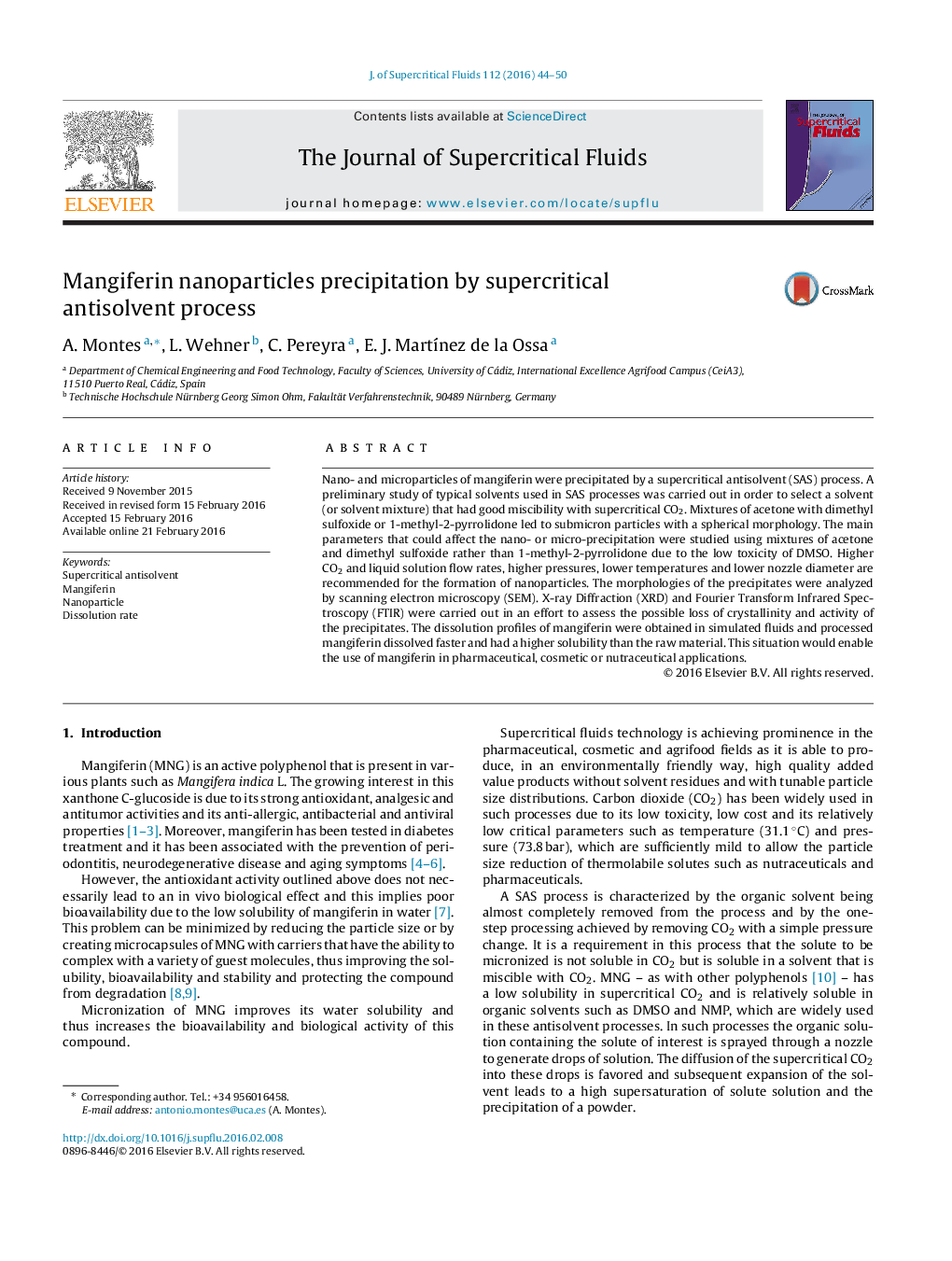| Article ID | Journal | Published Year | Pages | File Type |
|---|---|---|---|---|
| 230070 | The Journal of Supercritical Fluids | 2016 | 7 Pages |
•Nano and microparticles of mangiferin have been obtained by SAS process.•The negligible and stronger effects on particle size were identified.•Higher CO2 flow rate led to spherical nanoparticles production.•Mangiferin was amorphizated in the process.•Nanoparticles of mangiferin dissolve faster than raw material in simulated fluids.
Nano- and microparticles of mangiferin were precipitated by a supercritical antisolvent (SAS) process. A preliminary study of typical solvents used in SAS processes was carried out in order to select a solvent (or solvent mixture) that had good miscibility with supercritical CO2. Mixtures of acetone with dimethyl sulfoxide or 1-methyl-2-pyrrolidone led to submicron particles with a spherical morphology. The main parameters that could affect the nano- or micro-precipitation were studied using mixtures of acetone and dimethyl sulfoxide rather than 1-methyl-2-pyrrolidone due to the low toxicity of DMSO. Higher CO2 and liquid solution flow rates, higher pressures, lower temperatures and lower nozzle diameter are recommended for the formation of nanoparticles. The morphologies of the precipitates were analyzed by scanning electron microscopy (SEM). X-ray Diffraction (XRD) and Fourier Transform Infrared Spectroscopy (FTIR) were carried out in an effort to assess the possible loss of crystallinity and activity of the precipitates. The dissolution profiles of mangiferin were obtained in simulated fluids and processed mangiferin dissolved faster and had a higher solubility than the raw material. This situation would enable the use of mangiferin in pharmaceutical, cosmetic or nutraceutical applications.
Graphical abstractSEM images of (a) raw material and (b) nanoparticles of manguiferin (run 8) processed by SAS. P: 150 bar, T: 40 °C, QCO2QCO2: 30 g/min, QL: 3 mL/min, cc: 7.5 mg/mL, Øn: 100 μm and tw: 60 min.Figure optionsDownload full-size imageDownload as PowerPoint slide
